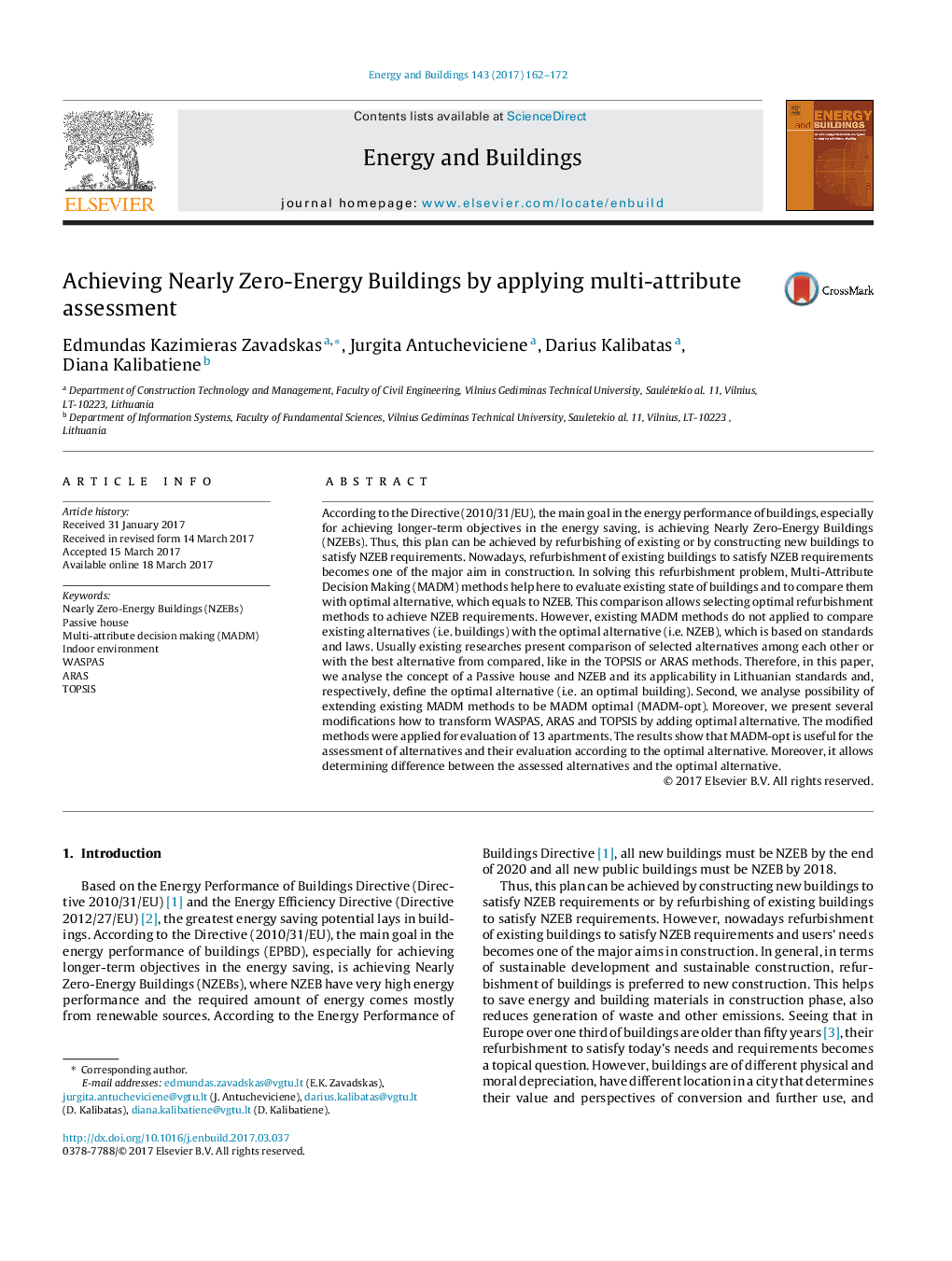| کد مقاله | کد نشریه | سال انتشار | مقاله انگلیسی | نسخه تمام متن |
|---|---|---|---|---|
| 4914197 | 1428947 | 2017 | 11 صفحه PDF | دانلود رایگان |
عنوان انگلیسی مقاله ISI
Achieving Nearly Zero-Energy Buildings by applying multi-attribute assessment
ترجمه فارسی عنوان
دستیابی به ساختمانهای نزدیک به انرژی صفر با استفاده از ارزیابی چند ویژگی
دانلود مقاله + سفارش ترجمه
دانلود مقاله ISI انگلیسی
رایگان برای ایرانیان
کلمات کلیدی
موضوعات مرتبط
مهندسی و علوم پایه
مهندسی انرژی
انرژی های تجدید پذیر، توسعه پایدار و محیط زیست
چکیده انگلیسی
According to the Directive (2010/31/EU), the main goal in the energy performance of buildings, especially for achieving longer-term objectives in the energy saving, is achieving Nearly Zero-Energy Buildings (NZEBs). Thus, this plan can be achieved by refurbishing of existing or by constructing new buildings to satisfy NZEB requirements. Nowadays, refurbishment of existing buildings to satisfy NZEB requirements becomes one of the major aim in construction. In solving this refurbishment problem, Multi-Attribute Decision Making (MADM) methods help here to evaluate existing state of buildings and to compare them with optimal alternative, which equals to NZEB. This comparison allows selecting optimal refurbishment methods to achieve NZEB requirements. However, existing MADM methods do not applied to compare existing alternatives (i.e. buildings) with the optimal alternative (i.e. NZEB), which is based on standards and laws. Usually existing researches present comparison of selected alternatives among each other or with the best alternative from compared, like in the TOPSIS or ARAS methods. Therefore, in this paper, we analyse the concept of a Passive house and NZEB and its applicability in Lithuanian standards and, respectively, define the optimal alternative (i.e. an optimal building). Second, we analyse possibility of extending existing MADM methods to be MADM optimal (MADM-opt). Moreover, we present several modifications how to transform WASPAS, ARAS and TOPSIS by adding optimal alternative. The modified methods were applied for evaluation of 13 apartments. The results show that MADM-opt is useful for the assessment of alternatives and their evaluation according to the optimal alternative. Moreover, it allows determining difference between the assessed alternatives and the optimal alternative.
ناشر
Database: Elsevier - ScienceDirect (ساینس دایرکت)
Journal: Energy and Buildings - Volume 143, 15 May 2017, Pages 162-172
Journal: Energy and Buildings - Volume 143, 15 May 2017, Pages 162-172
نویسندگان
Edmundas Kazimieras Zavadskas, Jurgita Antucheviciene, Darius Kalibatas, Diana Kalibatiene,
